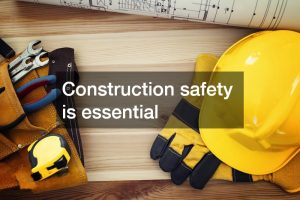
Construction safety is essential for keeping costs down and protecting workers. A key component of construction safety is site planning. Getting ready for construction should include a site safety plan that reduces the risk of injuries and includes the proper equipment.
Construction worker training, following OSHA guidelines, and keeping a keen eye on potential hazards should all be part of the plan. Proper safety equipment should be secured and mandatory on every job site. There are plenty of risks involved in construction that can be offset by having the right safety equipment. When used correctly, safety equipment can significantly reduce the risk of injuries.
Construction site injuries cost millions of dollars every year. Construction businesses lose significant money due to lost hours worked, medical costs, and compensation costs. However, construction-related injuries are avoidable. A small investment in safety equipment can offset costly injuries.
A heavy worker, or a heavy equipment operator, is at great risk of injury or injuring others. The right equipment can make the operation much safer for everyone. Safe construction starts with a safety plan and the right safety equipment. Don’t risk outcomes. Get your crew’s safety equipment and training to ensure you are appropriately mitigating injury risks.

Did you know that construction jobs caused more deadly injuries than any other industry in 2009? Although OSHA conducts equipment inspections each year, accidents occurring on construction sites are often caused by faulty or substandard equipment. As a result, it is important to obtain the proper safety equipment. By doing so, construction sites will be safer to work on.
1. Lifting equipment. This type of equipment is commonly used to elevate or lift large materials to a higher location more safely. Web slings, hoists, wire rope, and round slings, for example, are all commonly used to raise large or heavy materials. Not only are these pieces of lifting equipment durable and long-lasting, but they are also available in many sizes so that they can be used on a variety of materials, as well. Lifting heavy objects is a dangerous task, so lifting equipment helps make this job easier and safer.
2. Fall protection equipment. This type of equipment is used to prevent workers from falling from high elevations. Fall protection equipment typically consists of harnesses, body belts, and shock absorbing lanyards, and these pieces of equipment are essential for most construction workers to have. Since falls are the leading cause of fatality in the construction industry, fall protection equipment is a necessity.
Although safety training can help teach workers how to stay safe on construction sites, all construction workers must wear the proper safety gear. Lifting equipment and fall protection equipment, for example, can both help workers stay safe. By obtaining these pieces of safety gear, your construction site will be safer to work on.
